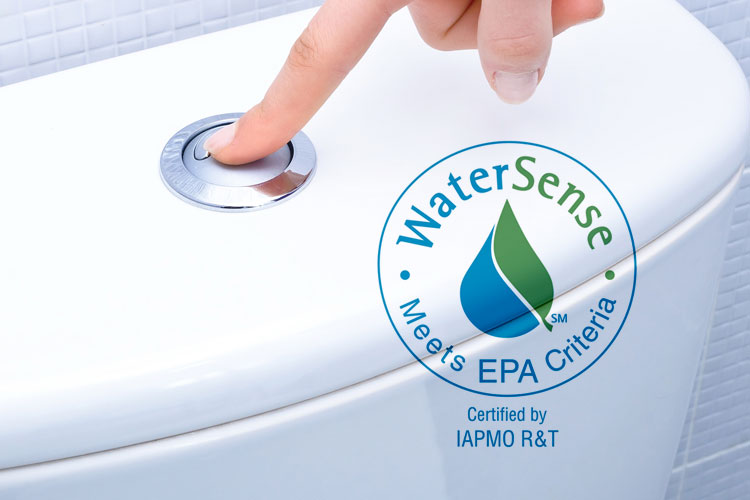With an increased focus on the important work of the U.S. EPA, we are going to take a deeper look into the requirements for WaterSense appliances. Toilets are by far the main source of water use in the home, accounting for nearly 30 percent of an average home’s indoor water consumption. Older, inefficient toilets that use as much as 6 gallons per flush also happen to be a major source of wasted water in many homes.
Flush Facts
Recent advancements have allowed toilets to use 1.28 gallons per flush or less while still providing equal or superior performance. This is 20 percent less water than the current federal standard of 1.6 gallons per flush. The WaterSense label is used on toilets that are independently certified to meet rigorous criteria for both performance and efficiency. Only water-saving toilets that complete the certification process can earn the WaterSense label.
Whether remodeling a bathroom, starting construction of a new home, or simply replacing an old, leaky toilet that is wasting money and water, installing a WaterSense labeled toilet is a high-performance, water-efficient option worth considering. WaterSense labeled toilets are available at a wide variety of price points and a broad range of styles and in many areas, utilities offer rebates and vouchers that can lower the price of a WaterSense labeled toilet.
By replacing old, inefficient toilets with WaterSense labeled models, the average family can reduce water used for toilets by 20 to 60 percent—that’s nearly 13,000 gallons of water savings for your home every year! They could also save more than $140 per year in water costs, and $2,900 over the lifetime of the toilets.
Nationally, if all old, inefficient toilets in the United States were replaced with WaterSense labeled models, we could save 360 billion gallons of water per year, or the amount of water that flows over Niagara Falls in about 9 days.
Household leaks can waste 180 gallons per week. Toilets are often the culprit. If your toilet has a leak most likely it is due to an old or worn-out toilet flapper (e.g., valve seal) which can cause leaks. Flappers are inexpensive rubber parts that can build up minerals or decay over time. Replacing them is quick and easy.
Criteria
Beside the general requirements for single-flush water closet to ASME A112.19.2/CSA B45.1, with certain exceptions or dual-flush capabilities to ASME A112.19.14, the additional water efficiency criteria for the effective single-flush and dual flush toilet volume shall not exceed 1.28 gallons (4.8 liters) when evaluated in accordance with the 10 CFR 429.30 sampling plan. For dual-flush toilets the effective flush volume is the average flush volume of two reduced flushes and one full flush. The specification fails products with an average flush volume more than 0.10 gallon (0.4 liter) greater than their rated flush volume.
Products bearing the WaterSense label are generally at least 20 percent more water-efficient than similar products in the marketplace. EPA develops specifications that outline the requirements that products must meet to earn the WaterSense label. In developing specifications, WaterSense works with standards development organizations like IAPMO and other stakeholders. Actions are released for public comment and review before being released as final.
In response to requirements of the America’s Water Infrastructure Act of 2018, EPA reviewed existing WaterSense product specifications for tank-type toilets, flushing urinals, bathroom faucets, showerheads, and irrigation controllers and made the decision not to revise them at this time. For additional information go to: https://www.epa.gov/watersense/specifications-and-certifications
From the US EPA website

Anish Desai
Last modified: July 14, 2023

